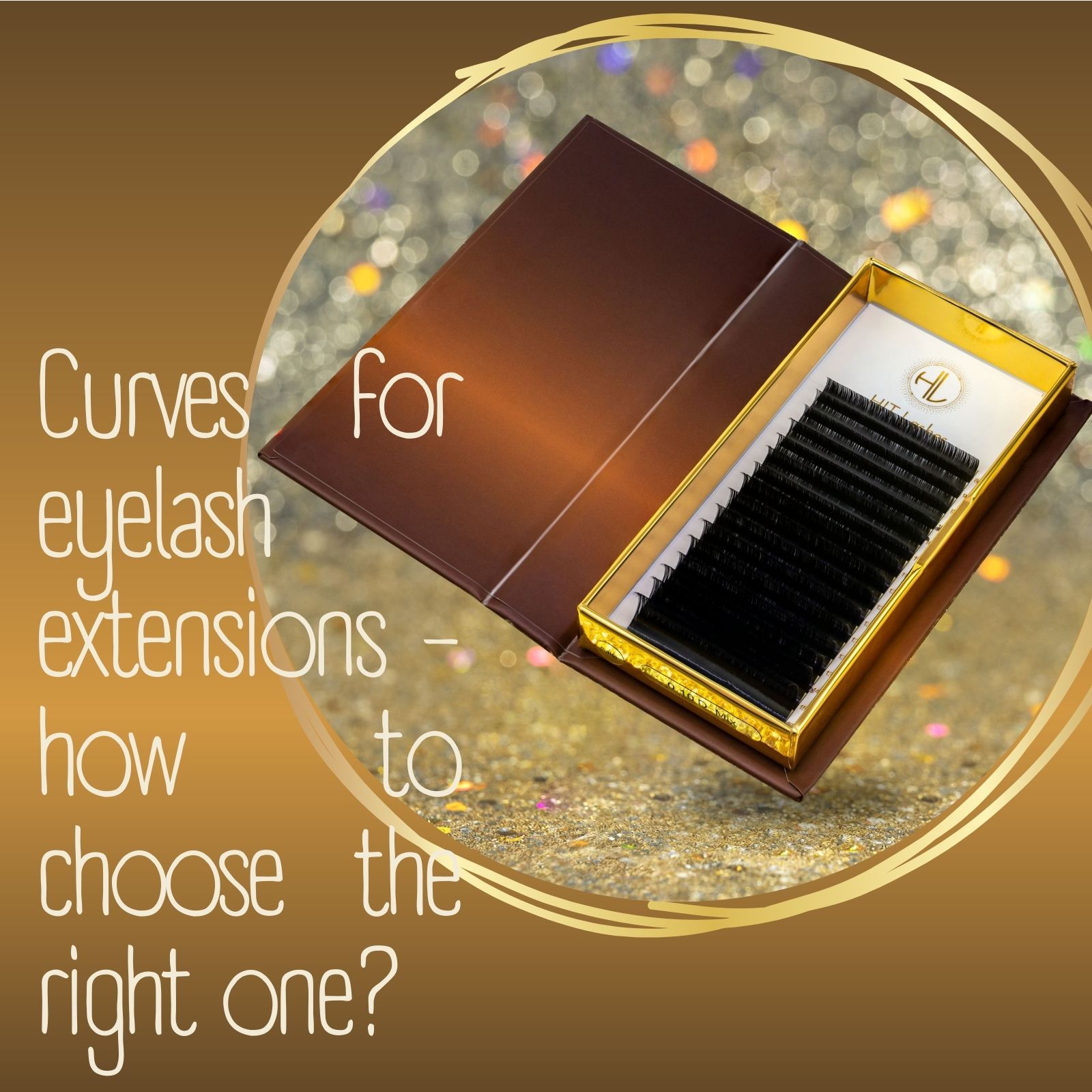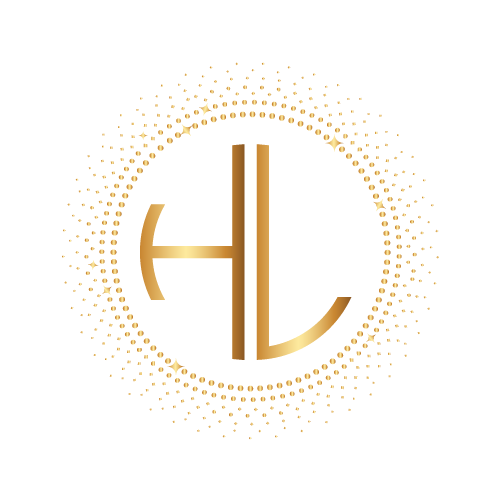
Curves for eyelash extensions – how to choose the right one?
Regardless of how bright the appearance of the fair sex, extended eyelashes will make the look more cute or vice versa, mysterious and attractive. And if you choose the right bend of the eyelashes, you can even visually correct the shape of the eyes, bringing it closer to the almond-shaped. And this, in turn, greatly affects the height of the forehead and even the shape of the nose and chin. Let’s take a closer look at the existing curves of artificial hair extensions, determine which of them are the most popular, and what effect can be achieved using cilia of various curves.
Curves of eyelash extensions and their description
There are many bends of eyelashes, but in our country, masters know about eight main types. Each of them is selected in a strictly individual order, depending not only on the preferences of the client, but also on the bend of natural cilia, their thickness and density, as well as on the shape of the eyes and a certain way to change it. Bends are indicated by letters of the Latin alphabet and are ranked depending on the intensity of the bend:
Curve J
This is an almost imperceptible bend of the hair, and the curl is located closer to the tip. Often this bend is used for eyelash extensions on the lower eyelid, as well as to create the most natural effect when working with upper eyelashes. Classic and partial extensions with this curve allow you to achieve a natural look, due to which it is almost impossible for the naked eye to notice that the eyelashes are not natural. In addition, J-curved hairs are used in extensions for long, but sparse or thin eyelashes to create not so much length as volume.
Curve B
The curl is also subtle, but still the hair twists a little more intensely at the tip than with the J bend. If the client asks to accentuate the eyes, but not overdo it, the B bend will be a great option. Since in most girls the natural curve of the eyelashes is identical to curl B, the master manages to achieve the effect of strengthening natural eyelashes, and the extension is also not noticeable to the naked eye.
Curve C
It differs in a curl of medium intensity, and this bend is already quite noticeable. It allows you to open your eyes and make your eyes look more open. It is universal – it can be used in almost any extension technique and to create any effect. Most clients prefer the C curve.
Curve D or CC
Also, this bend is known as “significant”. This option is optimal for increasing the volume of the eyelash sheet, if the natural hairs are sparse and thin, as well as for visually correcting the impending eyelid. In addition, the CC curve allows you to slightly curl the eyelashes that “look” down. After the extension, the perception of the eyes changes, and due to this, the appearance of the entire face also changes. But, unfortunately, this bend cannot look natural, since such curled natural eyelashes are very rare in nature.
Curve M
Another option for a significant bend with one interesting feature – with the same length as the cilia of other bends, the artificial hairs M visually seem longer. Therefore, this option is great for “lifting” natural cilia growing down. But to achieve a natural effect with such hairs will not work either.
Curve U
A very intense curl, which is used mainly for extensions with a puppet effect. Such extremely curved eyelashes are very suitable for young girls who want to appear naive and charming, and their eyes always have a slightly surprised expression. But when building with eyelashes of such a bend, it is necessary to control the volume. You may even have to abandon eyelash extensions in favor of alternate ones, otherwise the result will look not so much unnatural as ridiculous.
Curve L
This option got its name due to the visual resemblance to the Latin letter – the hair has a completely straight base, and then sharply bends towards the tip. This type of artificial hair is suitable for girls with straight eyelashes, as well as for those who constantly wear glasses. Due to the special shape of the hairs, the eyelashes remain long and curved, but do not rest against the lenses of the glasses, do not cause discomfort.
Curve L+
It is a transitional option from L cilia to CC cilia. Such hairs allow you to adjust the shape of the eye and open it if the eyelids are naturally too “puffy” or drooping.
Also, some eyelash extension brands are developing product lines with curves such as Q, Q+, etc., which are either identical to the existing ones or have minor differences.
What are the most popular curves?
When a novice lash maker begins to explore the range of eyelash extensions, he literally grabs his head from the abundance of bends, lengths and other parameters that characterize the artificial hairs on the market. However, you should not immediately strive to buy a little of everything, since it is likely that many bends will be unclaimed and will gather dust on a shelf in a closet, and the most popular ones will quickly end. Only when you get your hands on extensions, learn how to choose bends for visual correction of the shape of the eyes and master a wide range of extension techniques, it will be possible to take care of acquiring additional bends. After all, the more experienced the master, the wider the range of his services and the higher the earnings.
A novice master should definitely stock up on eyelash extensions with the following bends in advance:
- B – suitable for girls with almond-shaped eyes to emphasize natural beauty and create a natural effect;
- C – creates the effect of lashes painted with mascara, allows you to visually open your eyes;
- CC – creates the effect of eyelashes curled with tweezers, opens the look even more and allows you to adjust the shape of the eye;
- U – creates a shadow effect on the eyes, thanks to which the client can save on makeup products;
- L is ideal for those who wear glasses or have slanted eyes.
- Since the most popular are the bends C and SS, they must be purchased in the largest quantity. The rest of the bends from this list should also be available to the novice builder, but in smaller quantities. And the rest of the bends should be bought as you grow professionally, gain experience and acquire skills.
The role of curling eyelash extensions
When performing an eyelash extension procedure, the bending of the artificial hairs plays a key role. They are selected personally for a particular client in accordance with his wishes and preferences, as well as depending on the initial external data. By the way, one extension does not have to be done with cilia of different lengths, but one bend. In different parts of the ciliary margin, bristles with different curves can be used.
Factors to be considered when selecting eyelash extensions include:
how strong and strong natural eyelashes are – the more intense the bend, the higher the load on natural hairs;
duration of wear – the more accurately the bend is selected, the longer the cilia will last, the less will be the risk of their premature loss, breaking off and deformation;
the aesthetics of the final result – if the bend was chosen correctly, the shape of the eyes will become more harmonious, and if not, the extension will spoil the whole appearance, even with good natural data.
It is advantageous to emphasize the shape of the eyes or slightly correct it not only by using 3D and 4D volumes, but also with classic eyelash and even incomplete extensions. In this case, the natural beauty of the eyelashes is only slightly emphasized, and the outer corner of the eye stands out a little more.
If your client wants super-expressive eyelashes, there are types of extensions with extreme volume, when up to seven artificial ones are glued to one natural hair. It is important to work wisely here: choose a minimally intense curl, make sure that natural eyelashes are strong enough to withstand increased loads, and not build up bunches on every eyelash.
How to choose the curl of the eyelashes for the shape of the eyes
Before choosing an eyelash curl for a particular client, it is necessary to visually assess the shape of the eyes, the size of the incision, fit and other nuances. Almond-shaped eyes are considered classic and most beautiful in shape, which are moderately convex and spaced from each other by the width of one eye.
So, the following types of eyes are distinguished:
- In shape – almond-shaped (European), round and slit-shaped (Asian).
- By expressiveness – with a normal fit, deep set, convex.
- Size – small, large, medium.
- According to the distance between the inner corners – normally spaced, widely spaced, closely spaced.
- To determine which types of the client’s eyes are, you need to draw an imaginary line from the inner corner to the outer. If this line is horizontal, the eye is classic almond shaped. If the line tends upward at the outer corner, then it is raised. If the line falls, the outer corner is omitted, a characteristic found in most Europeans.
The task of the lashmaker is to fulfill all the instructions and wishes of the client, but if he asks to “make it beautiful”, everything possible must be done to bring the shape of the eyes closer to the almond-shaped. To do this, the lashmaker chooses the build-up effect, volume and, of course, the bend.
For example, a light curl J or B visually lengthens a too round eye, and slit-like eyes will help round a more intense curve – from CC to L. If correction is not needed, curves B, C and CC will come in handy.

Now let’s look at the types of eyes, the curves of the eyelashes and the desired effects in more detail:
- Round eyes – for visual lengthening, we use a less intense bend.
- Small eyes – visually expand the eyes by applying a smooth bend.
- Aged eyes with drooping or swollen eyelids – open your eyes and refresh your eyes with hairs with a curl intensity of medium and above average.
- Lowered outer corners – lift them up with a very intense bend at the corners, use a medium bend on the rest of the eye, do not build up the lower eyelashes in any case.
- Close-set eyes – closer to the middle we use a more intense bend, to the outer corners – a less intense one.
- Widely spaced eyes – use the maximum curl closer to the inner corner.
- Overhanging eyelid – use a strong bend on the outer corner of the eyes, do not touch the lower eyelashes.
- Raised outer corners of the eyes – we highlight the outer corner with eyelashes with a smaller bend.
When working with combinations of different lengths and curls, one important detail must be remembered: even if the lashes have the same curl, the longer the length, the less curl intensity. Therefore, in some cases it is advisable to increase the bend as the length of the artificial cilia increases.
Another important point is that the stronger the hair is twisted, the shorter the extended eyelashes look in the end. Therefore, if the client needs both lengthening and bending, “throw” a few millimeters over the main chosen length.
Volume and thickness of eyelash extensions
When working with the curves of eyelashes, it is worth paying attention to their thickness – the higher it is, the more volume the final eyelash sheet will have, but the higher the load on natural cilia will be.
The minimum thickness of artificial hairs on the market ranges from 0.05 to 0.08 for different manufacturers. Such thin eyelashes are optimal for use on thick and thin eyelashes, as well as for hyper-volume extensions up to 7D – they do not overload the picture, but create a very original effect. At the same time, the mass of all artificial cilia does not give too much stress on the eyes. For classic, incomplete, one and a half or 2D extensions, hairs with a thickness of 0.1 to 0.13 mm are used. This size is almost identical to natural cilia, so with their help you can achieve a natural effect without significant weighting.
Thickness from 0.14 to 0.19 mm is used only with the classic version of extension, and the effect of a summed up ciliary edge is created. The eyelashes are already quite voluminous, but still look natural and do not exert a significant burden on natural hairs.
Eyelashes with a thickness of 0.2 to 0.25 mm are used only to create a dramatic effect, for filming or stage performances. In everyday wear, such thick hairs not only look unnatural, but also cause discomfort – they are stiff, rather prickly and heavy.
In extensions, it is not necessary to use only one volume of eyelashes. For example, natural cilia at the inner corner of the eye are not only short, but also very thin. If you grow hairs of medium thickness on them, they will cause discomfort, and if you don’t build anything at all, the result will look strange and unfinished. In this case, it is better to use thin and short artificial cilia, and closer to the middle of the eye, increase both the length and thickness.
It also happens that clients have visible bald spots in the eyelash sheet. Since artificial lashes can only be glued to natural lashes and not to skin, the gap can be filled with thicker lashes. Just glue them to the lashes on either side of the empty area and it will help visually fill it in.
Eyelash Extension Materials
Natural animal hairs were used before – only after they were subjected to special treatment. Such cilia were distinguished by softness, elasticity and low weight. However, they had drawbacks: they must be carefully sorted by length, thickness and bend, they can change the curl due to high or low humidity, they can cause allergies, they gradually fade in the sun. The issue of ethics and animal welfare should also not be ignored. Due to the shortcomings, natural hairs practically ceased to be used by craftsmen, demand fell, and the product gradually left the market.
Natural rubber hairs – made from hevea sap, which, when solidified, forms rubber of natural origin. They are strong and elastic, rarely cause allergies. However, such eyelashes are very expensive, and not every client can afford them. Moreover, not every master can allocate funds from the budget for them.
Synthetic – the most affordable and most used artificial cilia.
Synthetic hairs, in turn, are made from the following materials:
- acrylic – the first eyelashes for extension were produced from it, which were strong, but rigid and not elastic, distinguished by a glossy shiny surface;
- polyester – occupies a leading position in the market of goods for lashmaking, characterized by elasticity and elasticity, resistance to deformation, uniform color, moisture repellency and hypoallergenicity;
- PBT fiber (polybutylene terephthalate) is a hypoallergenic polymer, the most common material for making eyelashes.
You can also distinguish the following types in the names of eyelashes, depending on the manufacturing technology:
- mink – have a matte surface, great for creating a natural effect;
- sable, silicone – a glossy fiber, has a bright color and allows you to achieve the effect of a let down ciliary edge;
- silk – semi-matte hairs, are light in weight and are suitable for weakened eyelashes, but their color is not as deep.
Now that you know all the intricacies of selecting artificial hairs for a particular client, you will have no questions about which building materials should be purchased at the beginning of a career, and which ones should be purchased later. In addition, having studied the information about bends and applying the knowledge gained in practice, each novice lashmaker will be able to quickly gain experience and expand the range of their services.
You will find all the necessary materials for the work of an eyelash extension master in our store. Get and work successfully and with pleasure!



